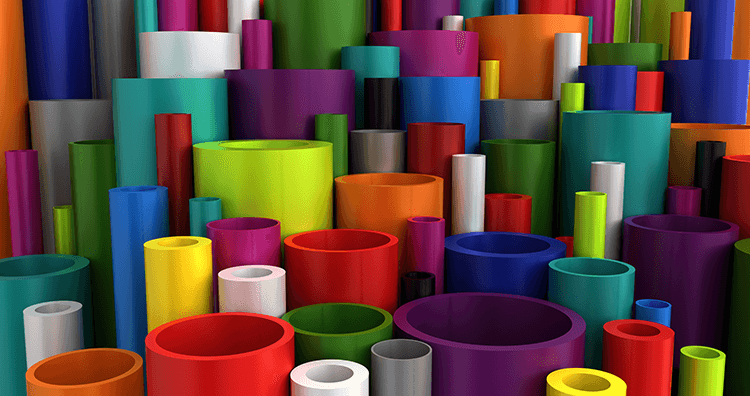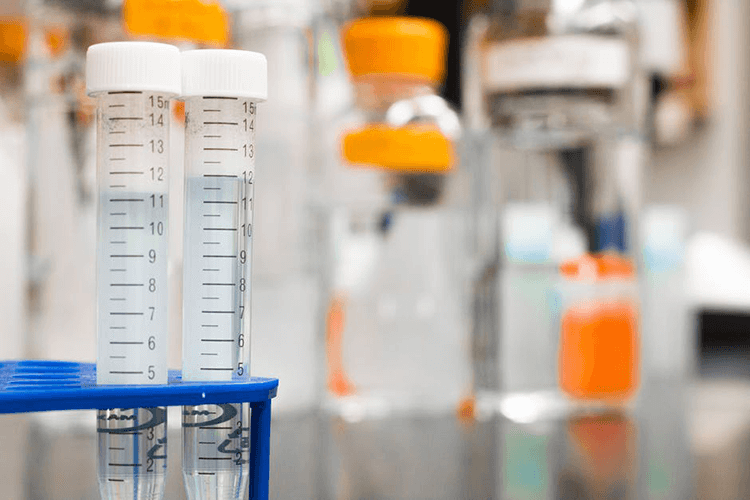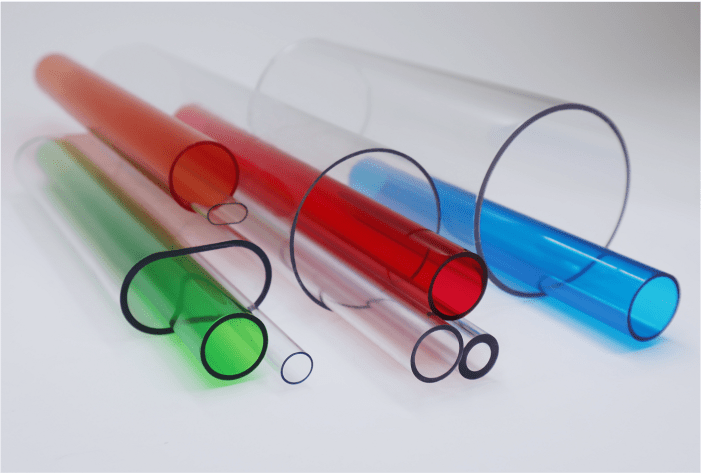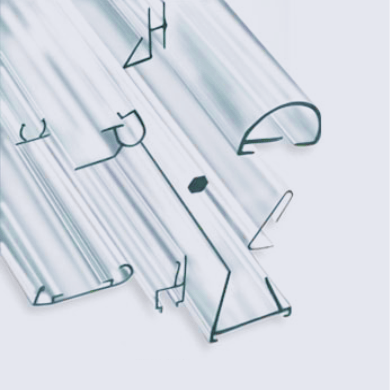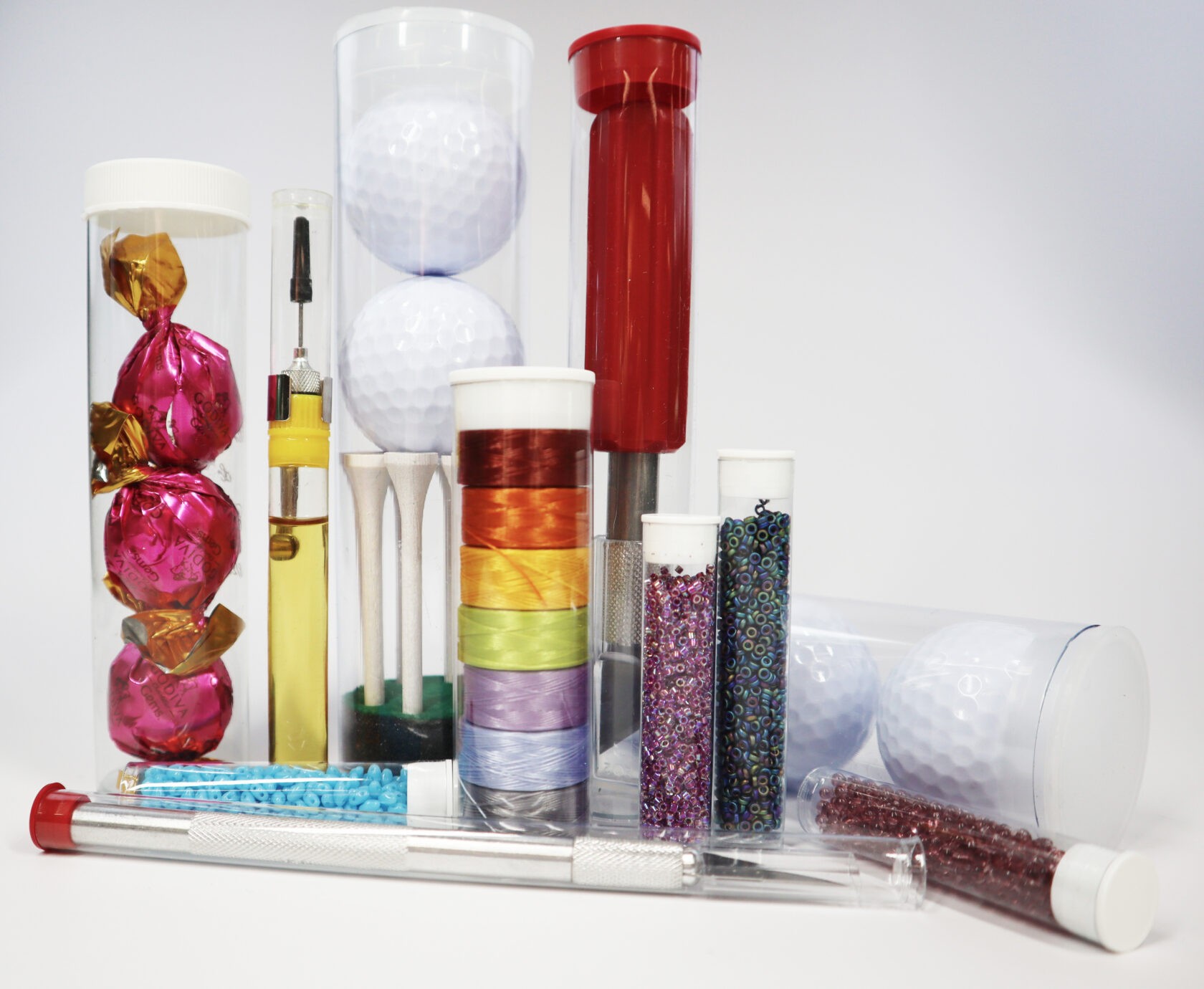Packaging plastic materials are highly efficient in packaging. It’s strong, durable, resistant, as well as extremely lightweight, and cheap to produce. Plastic is so light that it is the most energy-efficient material to use in packaging. More can be shipped using less fuel.
For this reason, packaging plastic has long overtaken other more traditional packaging materials, such as glass, wood, fabric, paper, and metal. For example, it takes just two pounds of plastic to transport ten gallons of liquid compared with either 40 pounds of glass or four pounds of metal (aluminum) to do the same job.
A recent European study shows that if we replaced plastics with other materials, it would use 57% more energy to ship the same amount of products.
You may be wondering how many types of plastic packaging are there? What are these different types of plastic used for? What’s the difference between plastics? Keep reading for the answers!
Different Types of Plastic Packaging
Some plastics are better suited to a specific kind of packaging than others. This guide to plastic packaging will outline the most commonly used types of plastic, their properties, and typical applications.
Low-Density Polyethylene (LDPE)
One of the most commonly produced plastics, this material is resistant to oils, acids, and bases. It’s rigid, flexible, and has good transparency, and very easy to produce. LDPE is a safe option for food and drink packaging.
Common uses include:
- Packaging that requires heat sealing
- Garbage bags
- Plastic bags
- Coatings on beverage cups and cartons
- Stretch film and shrink wrap
- Squeezy condiment bottles
- Fresh and frozen produce bags
- Flexible lids
- Wires and cables
This plastic can be recycled and is typically made into shipping envelopes, floor tiles, and new plastic bags.
High-Density Polyethylene (HDPE)
HDPE is the most widely used plastic for packaging. It’s translucent, tough, and chemical and solvent resistant. HDPE has high tensile strength, making it durable and able to withstand higher temperatures than other plastics.
Common uses include:
- Bottles for beverages and liquids
- Cosmetic bottles such as shampoo and conditioner
- Domestic cleaning containers
- Grocery bags
- Liners for cereal boxes
The disadvantages of both types of polyethylene are that they take large amounts of energy to produce. HDPE can be recycled, although the process can be complex. It tends to be recycled into new containers and plant pots.
Polypropylene (PP)
PP is a plastic with a high melting point, chemical resistance, and low moisture transmission. This makes it perfect for holding hot liquids.
Some common uses include:
- Medicine bottles
- Syrup bottles
- Yogurt containers
- Take-out and deli food containers
- Bottle closures and caps
Polypropylene is broken down by UV light and is, therefore, unsuitable for use in places with high UV rays levels. Its surface is also problematic for painting, so it cannot be easily used for printing.
When recycled, it is typically turned into products for automobiles, tools, and bins.
Polyethylene Terephthalate (PET, PETE)
This plastic has excellent moisture and gas barrier properties, which make it perfect for food containers. It has a solid ability to stop oxygen from ruining the item. It protects and holds the carbon dioxide in fizzy drinks.
PET/PETE is also shatter-resistant, smooth, and optically transparent.
Common uses include:
- Soft drinks bottles
- Juice, beer, and other beverage bottles
- Bottles for mouthwash
- Food jars for condiments and jelly
- Microwave meal trays
This type of plastic has a low heat resistance making it unsuitable for packaging some kinds of liquid.
The recycled flakes from this plastic are in demand for making carpets and other textiles.
Polyvinyl Chloride (PVC, Vinyl)
The world’s third most produced plastic, you have most likely heard of PVC. It is widely used due to its ability to resist oil and chemicals. It has stable physical properties, which make it strong with fantastic clarity.
Common uses include:
- Clamshells
- Blister packs
- Shrinkwrap for medical uses
- Deli and meat packaging
- Heavy-duty packaging bags
There are concerns that the by-products of manufacturing PVC are toxic to humans. It is also the least environmentally friendly type of plastic. PVC can be recycled and is usually turned into building materials.
Polystyrene
It can be foamed or rigid and has a high melting point. Stiff with insulating properties, it provides a moisture barrier.
Common uses include:
- Single-use cutlery, plates, and cups
- Meat and poultry trays
- Yogurt containers
- Egg cartons
- Clamshell take-out containers
- Protective packaging for electrical and delicate goods
This type of plastic is brittle, and UV light degrades the material. Additionally, it is highly flammable, making it unsafe for use in specific industries.
Polystyrene is one plastic that has a very low recycling rate. It is recycled, though. Casings for cameras, electrical outlets, and moldings used in construction are all made from recycled polystyrene.
PETG (Copolymer Polyethylene Terephthalate Glycol)
This plastic offers high chemical resistance, is highly transparent and glossy, tough, and economical to produce. It is also fully recyclable and does not contain BPA.
It has low forming temperatures, which make it easily vacuumed. Although not specifically a packaging use, PETG is also used in 3D printing.
Common uses include:
- Pharmaceutical and medical tubes
- Cosmetic containers
- Blister packs for tools and stationary
- Food and electronics packaging
This type of plastic has the lowest number of disadvantages. The main thing to watch out for is that the material can suffer from heat degradation.
CAB (Cellulose Acetate Butyrate)
A thermoplastic cellulose ester with up to 55% butyryl content, CAB is a vital plastic for commercial use. CAB is tough, rigid, and strong, heat resistant with a high-gloss surface.
Common uses include:
- Tubes for candy, toys, cosmetics, and craft materials
- Clear Mailing tubes
- Hardware packaging
- Printing inks
- Nail lacquer topcoats
- Industrial coatings
CAB can also improve coating properties such as hardness and glossiness.
CAP (Cellulose Acetate Propionate)
Tough, rigid, and strong, heat resistant with a high-gloss surface, CAP can be transparent, translucent, or colored.
Common uses include:
- Tubes for candy, toys, cosmetics, and craft materials
- POP (point-of-purchase) display items
- Other tube-style packages
Both types of cellulose-based plastics have poor solvent and alkaline resistance, making them unsuitable for use with certain liquids. They are also flammable.
PLA (Polylactic Acid)
PLA is made from renewable raw materials and is biodegradable. One of the plastics touted for solving the problem of unrecyclable plastics, PLA is safe for use in food and drink containers.
Common uses for PLA include:
- Take out cups
- Take out boxes
- Containers for fruit and vegetables
- Plastic film
- Plastic bottles
- Medical devices that should biodegrade in the body
Natural PLA is made from corn starch or sugar cane. Unlike many other plastics, it does not need crude oil for production.
The problem with the biodegradable aspect is that you can’t just toss it in a compost pile and expect it to decompose. The right conditions need to be provided for PLA to decompose properly.
Recycling Plastic Packaging
Sustainability and recyclability are two of the biggest packaging and design industry trends of 2021. The ease of recyclability is now significant for many consumers. Most plastic packaging can be recycled, but some plastic types are more difficult to recycle than others.
The codes in a triangular arrow on plastic packaging indicate the type of plastic used to make it. These numbers make the recycling process more efficient. When choosing plastic packaging for your products, consider how easy it is to recycle.
Choose the Plastic Most Suited to Your Needs
Now you have a better understanding of the properties of the types of plastic packaging. This should help you better recognize which type of plastic most suits your company’s needs.
If you’re looking to purchase plastic packaging for your products, it’s crucial to research thoroughly to ensure you select the suitable plastic for your needs. You want to ensure the goods you are packaging stay fresh and unperished for as long as possible.
At Petro Packaging Company Inc, we have over four decades of experience behind us. We specialize in producing PETG, CAB, and CAP plastics and can be relied upon to tell you if these are the best types of plastic for your requirements.
If you would like some advice or wish to find out more about the varieties of plastic we offer, please don’t hesitate to get in touch today. We’ll be happy to share our knowledge with you.

